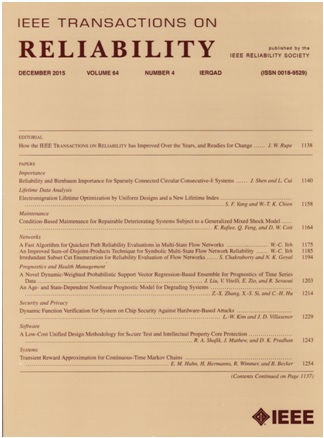BiGraphormer: A Bidirectional Graphormer on Directed Causal Graph for Fault Detection in Complex Systems
IF 5.7
2区 计算机科学
Q1 COMPUTER SCIENCE, HARDWARE & ARCHITECTURE
引用次数: 0
Abstract
Effective fault detection of complex systems can significantly enhance safety, availability, and maintainability. Recently, graph neural networks (GNNs), which leverage spatial structures among variables, have gained substantial attention due to advancements over previous data-driven methods. However, existing GNN-based fault detection models primarily focus on adjacent neighborhood for feature fusion, neglecting the long-range dependencies in graphs. Moreover, these models often utilize undirected correlational graphs, potentially limiting their applicability and modeling efficiency for target systems. In this work, a causal graph-based bidirectional Graphormer (BiGraphormer) is proposed for complex systems fault detection. The causal relationships among monitoring variables are mined and represented as a directed acyclic causal graph, in which nodes denote variables and directed edges indicate causal influence. Then, the dependencies including the global spatial structure, the node and edge information are encoded and fused using the proposed BiGraphormer. By incorporating both ancestral cause and descendant effect nodes along the directed causal graphs, comprehensive representations are constructed for system fault detection. To validate the effectiveness of the proposed framework, a case study concerning real monitoring data of high-speed train braking systems is conducted, with the results showing efficacy of the proposed method.双向书写器:用于复杂系统故障检测的有向因果图双向书写器
有效的故障检测可以显著提高复杂系统的安全性、可用性和可维护性。最近,图神经网络(gnn)利用变量之间的空间结构,由于比以前的数据驱动方法的进步而获得了大量关注。然而,现有的基于gnn的故障检测模型主要关注相邻邻域进行特征融合,忽略了图中的远程依赖关系。此外,这些模型通常使用无向相关图,潜在地限制了它们对目标系统的适用性和建模效率。本文提出了一种基于因果图的双向测距仪(BiGraphormer),用于复杂系统的故障检测。监测变量之间的因果关系被挖掘并表示为有向无环因果图,其中节点表示变量,有向边表示因果影响。然后,利用所提出的BiGraphormer对全局空间结构、节点和边缘信息等依赖关系进行编码和融合。通过结合有向因果图上的祖先原因节点和后代影响节点,构建了用于系统故障检测的综合表示。为了验证所提框架的有效性,以高速列车制动系统的实际监测数据为例进行了研究,结果表明了所提方法的有效性。
本文章由计算机程序翻译,如有差异,请以英文原文为准。
求助全文
约1分钟内获得全文
求助全文
来源期刊

IEEE Transactions on Reliability
工程技术-工程:电子与电气
CiteScore
12.20
自引率
8.50%
发文量
153
审稿时长
7.5 months
期刊介绍:
IEEE Transactions on Reliability is a refereed journal for the reliability and allied disciplines including, but not limited to, maintainability, physics of failure, life testing, prognostics, design and manufacture for reliability, reliability for systems of systems, network availability, mission success, warranty, safety, and various measures of effectiveness. Topics eligible for publication range from hardware to software, from materials to systems, from consumer and industrial devices to manufacturing plants, from individual items to networks, from techniques for making things better to ways of predicting and measuring behavior in the field. As an engineering subject that supports new and existing technologies, we constantly expand into new areas of the assurance sciences.
 求助内容:
求助内容: 应助结果提醒方式:
应助结果提醒方式:


